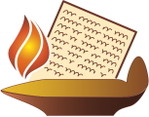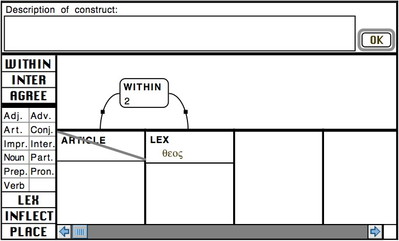
As I mentioned last week, I had to wait two years for Accordance to be released. After about a year-and-a-half, I found myself getting really impatient to have access to a good Bible software program on my Mac. I toyed with buying other commercial Bible programs, but they all seemed inordinately expensive for what they had to offer. None of them could really do Greek and Hebrew well, so I kept holding out for Accordance. At one point I even asked a professor whom I knew to be an Accordance beta-tester if I should settle for something else, and he assured me that Accordance would be well worth the wait.
Accordance 1.0 was finally released in February 1994, so it happens to be entering its third decade this month. At the time of its initial release, I believe it came with the grammatically-tagged Greek New Testament, a couple of English Bibles, and not much else. There were no tools or user notes yet (those were added in 2.0), no Bible Atlas (that wouldn’t come until 3.5), and no English Bibles tagged with Strong’s numbers (those came in 4.0). Yet what Accordance did, it did so well as to be truly ground-breaking. While there were mainframe and DOS programs that let you search the tagged Greek New Testament long before Accordance came along, they required the user to learn a kind of programming language to perform complex searches. Accordance took the Macintosh principles of interface design and applied them to the complex task of original language searching. The result was a Biblical language research tool “for the rest of us.”
One of the clearest examples of this Mac-like approach to language study was the Construct window. If you’re not yet familiar with it, the Construct window is a graphical framework for defining complex word relationships. By dragging search criteria into place and then defining relationships between them, you can easily construct some incredibly sophisticated searches. Here’s a screenshot of what the Construct window looked like back then:
Even today, when I demonstrate Accordance at the annual meetings of the Evangelical Theological Society (ETS) and the Society of Biblical Literature (SBL), I find that scholars and students working in the original languages are absolutely blown away by features of Accordance that have been around since version 1.0. When they see how easy it is to search the Greek and Hebrew without having to think like a programmer, they get really excited.
By the time Accordance 1.0 was released, I had begun working for a large church as the “Scribe.” Tongue-in-cheek job title aside, I was tasked with ghost-writing books which would summarize each year’s preaching series. I soon realized how much I needed a good Bible program, so I asked the church to purchase Accordance for me.
I distinctly remember my excitement when the Accordance floppy disks and manual arrived. I hastily started the installation and skimmed the manual while I waited. One of the first things I did after initially playing around with it was to begin defining and organizing my custom search ranges. I started with ranges like Old Testament, New Testament, Pentateuch, Gospels, etc. Then when I did all those I could think of, I decided it would be handy to have a range for each book of the Bible. I remember getting all the way through the Old Testament books and starting on the New Testament books when Accordance crashed on me! I believe I tried several more times to add books but each time, Accordance would crash. I later learned that Accordance had a limit of 50 ranges, and each time I exceeded it, the software would quit. I eventually gave up trying to add more ranges, but once I started working for the company, I lobbied for the ability to have more than 50!
If there were other bugs in that 1.0 release, I honestly can’t remember them. I soon found Accordance to be one of the fastest and most stable apps I owned, and I can’t describe the joy I felt when doing research for my books. I have never been more satisfied with a software purchase.
One evidence of my early enthusiasm for Accordance was that I wasted no time mailing in my registration card—something I typically never do. Little did I know how life-changing that decision would prove to be … but that’s a story for the next “Throwback Thursday.”


